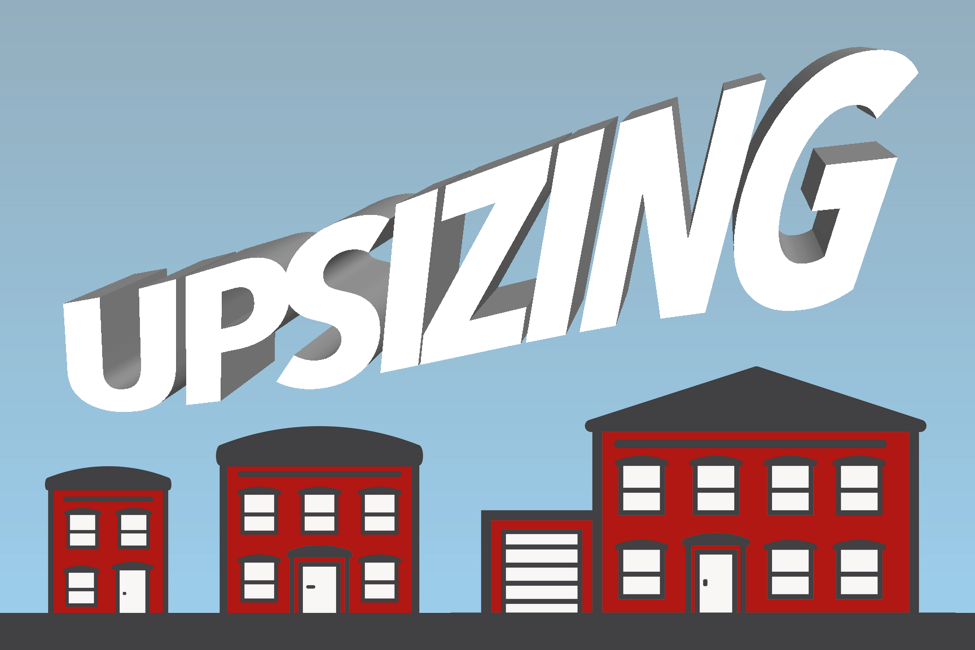Selling your old home and moving into a larger, more comfortable one can be an exciting adventure. If your current home feels a bit too snug, the idea of upsizing might seem like the perfect solution. But before you dive headfirst into the process, it’s essential to understand what it entails. Upsizing isn’t just about finding more space—it’s about making informed decisions that align with your needs, lifestyle, and budget. Let’s explore everything you need to know to make your upsizing journey a success!
Step 1: Do You Need to Upsize, or Do You Just Want to?
The first question you need to ask yourself is why you’re considering upsizing. Is your current home truly too small for your family, or could the issue be inefficient use of space?
Take a closer look at your home: Is every room being used to its full potential? Sometimes, a simple declutter or rearrangement can make your home feel larger.
Legitimate need for more space: If you’re starting or growing a family, or moving out of a one-bedroom condo, upsizing might be essential.
Fulfilling a want: There’s no shame in wanting a bigger home for comfort or luxury. Just be honest with yourself about why you’re making the move.
Why it matters: Knowing whether you’re upsizing out of necessity or desire helps you prepare for the financial and logistical responsibilities of a larger home.
Step 2: What to Look for in a Larger Home
Before you start house hunting, get clear on your must-haves. This will save time and help you avoid getting swept away by properties that don’t truly fit your needs.
Create a checklist: Think about how many bedrooms, bathrooms, and square footage you need. Do you want a yard, a bigger garage, or space for entertaining?
Choose the right neighbourhood: Proximity to schools, parks, and shopping might be key for your family. Decide whether you’re open to the suburbs or prefer staying close to the city.
Plan for the future: If you’re expanding your family, consider how your needs might change in the coming years.
Step 3: Work With a Trusted Real Estate Agent
Upsizing often means juggling two major transactions—selling your current home and buying a new one. A skilled real estate agent can guide you through the complexities of timing, pricing, and negotiating.
The benefits: They’ll help you sell your home faster, find the right new home, and navigate the paperwork.
Extra perks: Many agents offer staging services, market analysis, and help with temporary housing during the transition.
Step 4: Budget Wisely
One of the most exciting parts of upsizing is dreaming about your new space. But it’s essential to crunch the numbers before making a commitment.
Avoid being house poor: Follow the 28/36 rule: spend no more than 28% of your gross income on housing and keep total debts under 36%.
Consider the hidden costs: A bigger home means higher property taxes, utility bills, and maintenance expenses.
Be realistic: Don’t stretch your budget just to get a few extra square feet. Focus on what you can comfortably afford.
Step 5: Should You Sell First or Buy First?
This is one of the biggest decisions you’ll make during the upsizing process. Both options come with pros and cons:
Sell first: You’ll have the funds for a down payment and avoid juggling two mortgages. However, you may need to arrange temporary housing.
Buy first: Riskier but manageable if you work with your agent to include contingencies and set realistic timelines.
Step 6: Prepare Your Current Home for Sale
To sell your home quickly and at the best price, it needs to shine.
Declutter and deep clean: Create a space that buyers can envision as their own.
Fix the small stuff: Repair anything that’s broken, and consider a professional inspection to address any hidden issues.
Stage your home: Work with your agent to showcase your home in the best light, or hire a professional stager.
Step 7: Timing and Market Considerations
Timing is everything when you’re upsizing.
Seller’s market: Your current home might sell quickly, but finding a new one could be challenging due to competition.
Buyer’s market: You’ll have more options for your new home, but selling your old one might take longer.
Pro Tip: A skilled agent can help you navigate these dynamics and align your buying and selling timelines.
Step 8: Be Ready for Temporary Housing
If you sell before buying, plan where you’ll stay and what you’ll do with your belongings. Options include:
Short-term rentals
Staying with family or friends
Rent-back agreements with your buyer
Storage facilities or moving company storage for your belongings
Step 9: The Fine Details of Buying a New Home
Contingent offers: Protect yourself by making the purchase contingent on selling your current home. Be aware, though, that sellers in a competitive market may prefer non-contingent offers.
Coordinating closings: Align the closing dates of your old and new homes to avoid stress. Using the same escrow company can simplify this process.
Upsizing can be an exciting and rewarding experience, but it requires careful planning and decision-making. By understanding your needs, setting a realistic budget, and working with a trusted agent, you’ll be better prepared for the journey ahead.
Ready to make the leap to your dream home? Start planning today, and enjoy the process of finding a space that truly fits your lifestyle!

